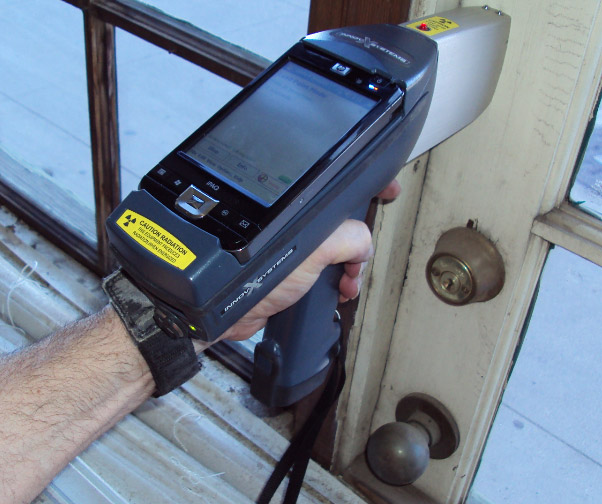Expert Lead Violation Removal in NYC-- Guard Versus Health Hazards
Wiki Article
Crucial Devices and Approaches for Reliable Lead Infraction Clean-up
Addressing lead infractions effectively necessitates a thorough approach that mixes the right devices with strategic methods. Simultaneously, the use of specialized clean-up devices, such as HEPA vacuums and lead-specific cleaning representatives, is essential for complete impurity removal. Efficient control approaches, consisting of plastic sheeting and adverse air stress systems, are necessary to avoid the spread of unsafe materials.Individual Protective Devices
Personal protective equipment (PPE) is a critical component in the reliable monitoring of lead contamination cleaning. The crucial PPE for lead cleaning consists of respirators, protective apparel, handwear covers, and eye security.Respirators, especially those geared up with HEPA filters, are important for filtering airborne lead fragments, stopping inhalation. Proper fit and seal checks are essential to ensure their performance. Safety clothes, including coveralls and non reusable fits, avoids lead dirt from sticking to workers' garments, reducing the threat of additional contamination. Gloves, commonly made from nitrile or latex, shield the skin from straight contact with lead, while safety goggles or full-face guards safeguard the eyes from dust and particles.
In addition, rigorous training on the proper usage and upkeep of PPE is important. Employees should be enlightened on donning and doffing treatments to avoid contamination. Routine examinations and substitutes of PPE parts are essential to maintain their protective abilities, guaranteeing a risk-free and compliant clean-up operation.
Specialized Cleaning Equipment

One more essential tool is the wet/dry vacuum cleaner, which can effectively clean up both dirt and fluid contaminants. These vacuums commonly come with HEPA filters to offer an extra layer of safety and security. Wet wipes or tack fabrics are additionally crucial for surface cleansing; they are especially designed to capture and hold lead bits, minimizing the threat of spreading out contamination.
For more stubborn deposits, specialized lead-removal cleaner are needed. These agents are developed to damage down lead fragments, making them less complicated to remove. Scrub brushes with sturdy bristles can aid in this process, particularly on rough surfaces where lead dust has a tendency to adhere a lot more highly.
In addition, encapsulants are made use of to secure lead-contaminated surface areas, protecting against the launch of lead dust. These specialized paints and layers are designed to follow numerous substrates, giving a long-term solution for lead containment.
Reliable Containment Techniques
Reliable containment approaches are important in mitigating the spread of lead contamination throughout cleanup activities. Executing durable containment approaches guarantees that lead bits do not migrate to untouched areas, thus shielding both employees and the setting. One primary approach is the use of plastic sheeting to seal pop over to this web-site off contaminated areas. Sturdy polyethylene barriers can be set up from floor to ceiling to create a regulated workplace, substantially decreasing the danger of air-borne lead dirt dispersal.
To improve containment, encapsulants can be related to surfaces that are not being gotten rid of or interrupted. These specialized finishes bind lead dust, lowering its accessibility for resuspension. Additionally, all workers need to use appropriate Individual Safety Equipment (PPE), consisting of respirators and disposable fits, to protect against contamination spread.
Safe Disposal Practices
Making sure secure disposal practices is an essential element in the management of lead contamination cleaning. Proper disposal reduces the risk of lead coming back the atmosphere and jeopardizing public health and wellness. The very first step is to identify and segregate lead-contaminated waste from other materials. Secure containment utilizing sturdy, watertight containers is necessary to protect against spillage throughout transport.Transferring lead waste requires adherence to rigorous guidelines. Making use of certified hazardous waste carriers ensures that the materials are taken care of sensibly. Paperwork, including materializes detailing the type and quantity of waste, need to go along with shipments to track the waste from the website of beginning to its last disposal location.
Designated contaminated materials disposal centers are outfitted to handle lead-contaminated materials safely. These centers often use advanced methods such as stabilization, solidification, or chemical treatment to counteract the lead before disposal. Landfilling in specialized, lined locations that protect against leachate from infecting groundwater is an usual method for final disposal.
Regular training for employees associated with lead waste disposal is important to keep safety standards and stop unexpected exposure. By sticking to these practices, organizations can substantially reduce the ecological and health and wellness influences related to lead contamination.
Regulatory Compliance Tips

Following regulatory conformity is extremely important in the successful implementation of lead contamination cleanup. Comprehending and following government, state, and neighborhood guidelines makes sure not just the safety and health and wellness of individuals yet likewise the lawful and monetary health of the cleanup organization. The Environmental Protection Company (EPA) sets strict requirements, such as the Lead Restoration, Fixing, and Paint (RRP) Rule, which mandates appropriate qualification and training for specialists managing lead-based activities.
Conformity begins with a thorough analysis of appropriate regulations and laws. Organizations needs to stay updated on any type of legal adjustments, which can be helped with via normal training sessions and registering for sector updates. Documents is one more vital conformity aspect; preserving thorough documents of all activities, including examination records, employee training logs, and disposal manifests, is necessary.
Moreover, engaging with licensed lead examiners or risk assessors makes sure that lead dangers are appropriately identified and alleviated. Employers need to apply using Personal Safety Tools (PPE) and make sure that safety and security link protocols are purely followed. Finally, transparent communication with stakeholders, including staff members, clients, and regulative bodies, will certainly foster a society of conformity and accountability, inevitably adding to a more secure and extra effective lead clean-up process.
Conclusion
Effective lead violation cleaning requires the integration of specialized devices and calculated techniques to ensure security and efficiency. Individual safety devices (PPE) safeguards workers from direct exposure, while risk-free disposal practices and strict adherence to governing conformity are essential for sensibly taking care of unsafe waste.Report this wiki page